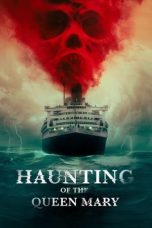- Source: Brothers (1785 ship)
The Lord of the Rings: The Fellowship of the Ring (2001)
The Super Mario Bros. Movie (2023)
Budak Flat (2023)
In Love and Deep Water (2023)
The Last Voyage of the Demeter (2023)
Haunting of the Queen Mary (2023)
Hotel Transylvania 3: Summer Vacation (2018)
Kabayo (2023)
Hounds of War (2024)
The Spiderwick Chronicles (2008)
The Demon Disorder (2024)
Transformers One (2024)
Beauty of Beauties (1965)
No More Posts Available.
No more pages to load.
Brothers was launched in the Thirteen Colonies in 1772, probably under another name. From 1785 she became a Bristol-based slave ship. She made six complete voyages in the triangular trade, in all embarking 1880 enslaved people. The French captured her in December 1794 as she was on the first leg of her seventh such voyage and before she had embarked any captives. The main source for this article provided detail on crew turnover and death rates for her first three voyages. The first voyage had a particularly heavy mortality rate among the crew. The main source also provided data for her fourth, fifth, and sixth voyages for mortality rates on the Middle Passage among the enslaved people that she was carrying.
Career
Brothers first appeared in Lloyd's Register (LR), in the issue for 1786; the 1785 issue is not available online. The absence of a volume for 1785 makes it impossible to see whether the Brothers in the 1784 issue, the former Somersall (or Sommersale), became the Brothers of this article.
1st voyage transporting enslaved people (1785–1787): Captain Jeffrey Howlett (or Howlet), sailed from Bristol on 22 July 1785. Brothers arrived at Cape Coast Castle on 16 September, and departed for Benin four days later. On 10 June 1786 she was "well" at Benin with 204 captives. She arrived at St Vincent on 18 January 1787 or 31 January with 220 captives. She sailed for Bristol on 7 March and arrived there on 2 May.
Brothers had left Bristol with 40 crew members. She enlisted six more while at Benin. She arrived at St Vincent with 18 crew members, and discharged eight there. She enlisted nine men before she left. She suffered two crew deaths on her way home.
In 1787, 32 of Brothers's 55 crew members died. This was the heaviest loss among 203 voyages from Bristol in that year to all destinations. Twenty-three vessels sailed from Bristol for West Africa and the West Indies, and they employed a total of 554 men; of these 554 men, 100 (approximately 18%), died. Death rates were highly variable across vessels: there were no deaths on seven voyages. If one removes Brothers from the calculation, the average death rate drops to a still high 12%.
2nd voyage transporting enslaved people (1787–1789): Captain Howlett sailed from Bristol on 6 July 1787. She was reported "well" at Anomaboe on 6 January 1788. She sailed from Cape Coast Castle on 22 July with 450 captives. She arrived at Grenada on 1 October. She left for Bristol on 6 November, and arrived there on 12 February 1789.
Brothers had left Bristol with 38 crew members. She arrived at Grenada with 27 of her original crew, and discharged three there; she also enlisted one man. Five men died on the homeward voyage, and she discharged four at Kinsale in January 1789. She arrived back at Bristol with 16 crew members.
This voyage and the subsequent ones took place under the provisions of Dolben's Act. Dolben's Act limited the number of enslaved people that British slave ships were allowed to carry without penalty, based on the ships' tons burthen. It was the first British legislation passed to regulate shipping of captives.
In 1788–1789, James Jones, Thomas's owner, had nine enslaving vessels at sea or on the coast of Africa. He estimated that the Act reduced the number of captives his vessels were allowed to carry by a number equivalent to 23% of the pre-Act total. For Brothers, the estimate was a reduction of 84 captives, from 400 to 316, or 21%. Jones was using 190 tons as the basis for his estimate. For Brothers the cap would have been 334 at a burthen of 200 tons, or 336 at a burthen of 201 tons.
3rd voyage transporting enslaved people (1789–1790): Captain David Williams sailed from Bristol on 22 July 1789. Brothers arrived at Cape Coast Castle on 5 September, and acquired captives at New Calabar. She arrived at St Vincent on 1 February 1790 with 310 captives. She sailed for Bristol on 22 March and arrived there on 7 May.
Brothers had left Bristol with 34 crew members. One man enlisted while she was on the African coast. She arrived at St Vincent with 24 crew members and discharged 11 there. She enlisted eight men before sailing. She returned to Bristol with 21 crew members.
Dolben's Act also provided for bonuses for master and surgeon for low mortality among the captives carried. Masters received a bonus of £100 if the mortality rate was under 2%; the ship's surgeon received £50. For a mortality rate between two and three per cent, the bonus was halved. There was no bonus if mortality exceeded 3%. Dolben's Act apparently resulted in some reduction in the numbers of slaves carried per vessel, and possibly in mortality.
4th voyage transporting enslaved people (1791): Captain Joseph Williams sailed from Bristol on 28 January 1791. Brothers passed Cape Coast Castle on 28 March and was reported at Bonny in April. She embarked 279 captives and arrived at Grenada on 7 August. By one account 54 captives died on the voyage, for a mortality rate of 19%. (Another report states that 50 died, for a mortality rate of 18%.) Brothers arrived back at Bristol on 27 October.
Brothers had left Bristol with 29 crew members, and she had 26 when she arrived at Grenada. During the voyage home one crew member died.
5th voyage transporting enslaved people (1791–1792): Captain Williams sailed from Bristol on 18 December 1791. He began acquiring captives on 24 February 1792 at New Calabar. Brothers sailed from Africa on 18 May, having embarked 287 captives, and arrived at Kingston on 3 July with 253; this represented a 12% mortality rate. She sailed for Bristol on 2 August and arrived back there on 25 September.
6th voyage transporting enslaved people (1793–1794): War with France broke out in early 1793. Captain Joseph Williams acquired two letters of marque, one on 9 March 1793 and a second on 14 March. He sailed from Bristol on 30 March, and started acquiring captives on 16 August at New Calabar. Brothers sailed from Africa on 27 September and arrived at Kingston, Jamaica on 9 December. She had embarked 350 captives, and arrived with 314; this represented a 10% mortality rate. She sailed from Kingston on 10 March 1794 and arrived back at Bristol on 21 April.
7th voyage transporting enslaved people (1794-loss): Captain James Barr sailed from Bristol on 15 October 1794.
Fate
A French squadron captured Nassau, Williams, master, in December 1794, and Brothers, Barr (or Bar), master, at Bonny and burnt them. She had not yet embarked any captves.
In 1794, 25 British enslaving ships were lost, of which 18 were lost on their way to Africa. This was the highest loss of vessels on their way to Africa in the entire 1793–1807 period; only three vessels were lost on the coast. Next year was even worse for owners of enslaving ships – 50 were lost in total, with 40 being lost on the coast. It was also the worst year for owners in the entire 1793–1807 period.
Notes
Citations
References
Behrendt, Stephen D. (1990). "The Captains in the British slave trade from 1785 to 1807" (PDF). Transactions of the Historic Society of Lancashire and Cheshire. 140.
Clarkson, Thomas (1808). The History of the Rise, Progress, and Accomplishment of the Abolition of the African Slave Trade by the British Parliament. Vol. 1.
Howley, Frank (2008). Slavers, Traders and Privateers: Liverpool, the African Trade and Revolution, 1773-1808. Countyvise. ISBN 9781901231984.
Inikori, J.E. (1981). "Market structure and the profits of the British African Trade in the late eighteenth century". Journal of Economic History. 41 (4): 745–776.
Inikori, Joseph (1996). "Measuring the unmeasured hazards of the Atlantic slave trade: Documents relating to the British trade". Revue française d'histoire d'outre-mer. 83 (312): 53–92.
Klein, Herbert S.; Engerman, Stanley L.; Haines, Robin; Shlomowitz, Ralph (2001). "Transoceanic Mortality: The Slave Trade in Comparative Perspective". William & Mary Quarterly. 58 (1): 93–118.
Minchinton, W.E., ed. (1957). The trade of Bristol in the eighteenth century. Vol. 20. Bristol Records society.
Press, Jonathan (1976). The merchant seamen of Bristol, 1747–1789. Bristol Branch of the Historical Association (Pamphlet no.38).
Richardson, David, ed. (1996). Bristol, Africa, and the Eighteenth-Century Slave Trade to America, Vo. 4 The Final Years, 1770-1807. Bristol Record Society, c/o Department of Historical Studies, Univ. of Bristol. ISBN 0901538175.






























